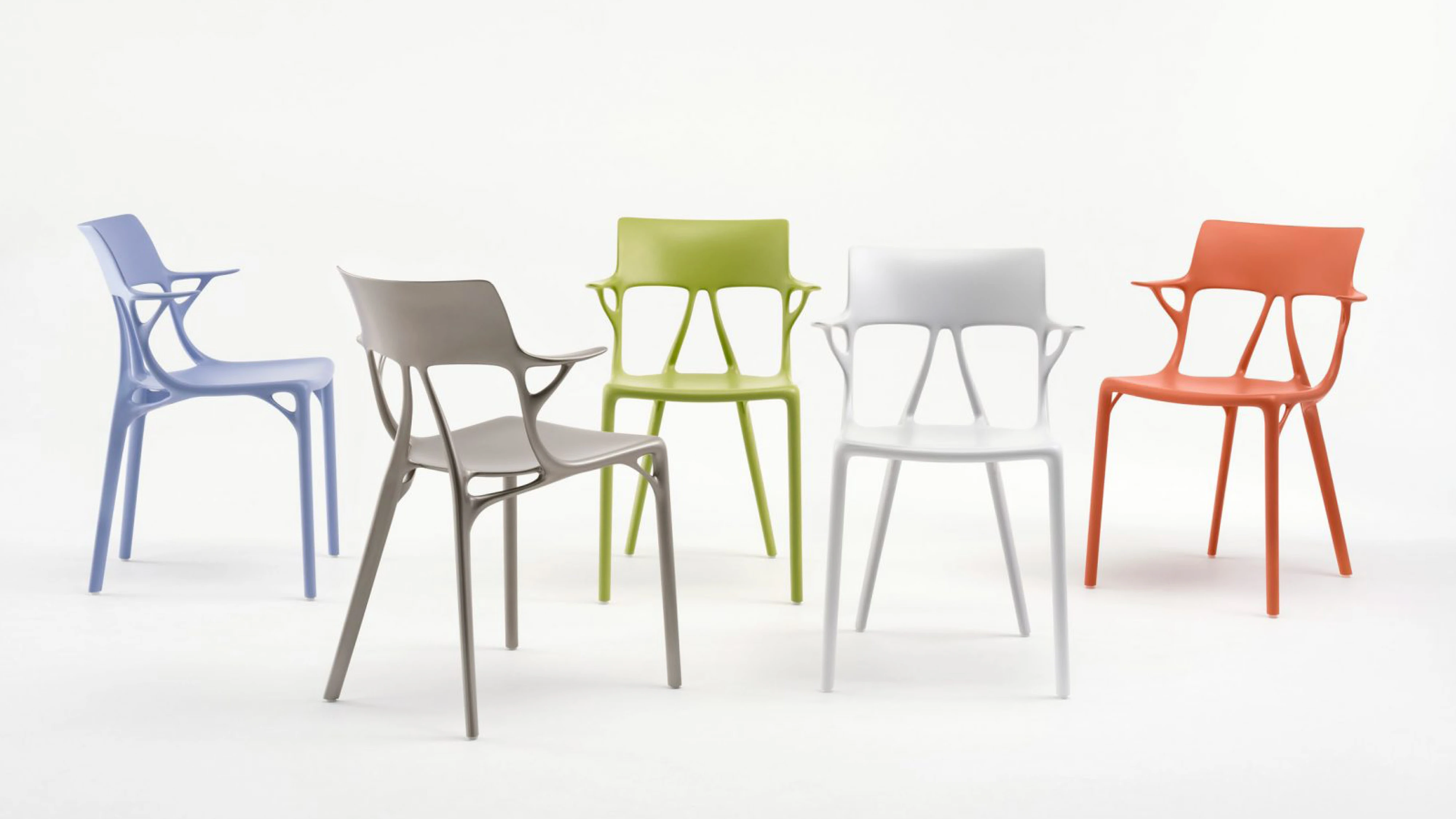
Can A.I. help furniture designers and the planet?
16-Jun-2023
Photo credit: A.I. Chair by Phillipe Starck for Kartell
A.I. has been all over the news these last few months – often accompanied by frightening predictions. In the third article in our FURNITURE in the NEW CLIMATE ECONOMY series, we discuss how Artificial Intelligence is reshaping the future of design - and how some furniture designers are harnessing A.I.'s power to advance a vision for a far more circular economy. Their experiments are beginning to reshape furniture production and consumption into a more regenerative, resilient system – better fit for the long term and for the climate economy.
Fighting and mitigating climate change while designing new consumer goods is a huge challenge. It starts with the design process. Artificial Intelligence is beginning to assist, and in doing so reshaping the future of the design profession – including furniture design.
DESIGNING WITH ARTIFICIAL INTELLIGENCE
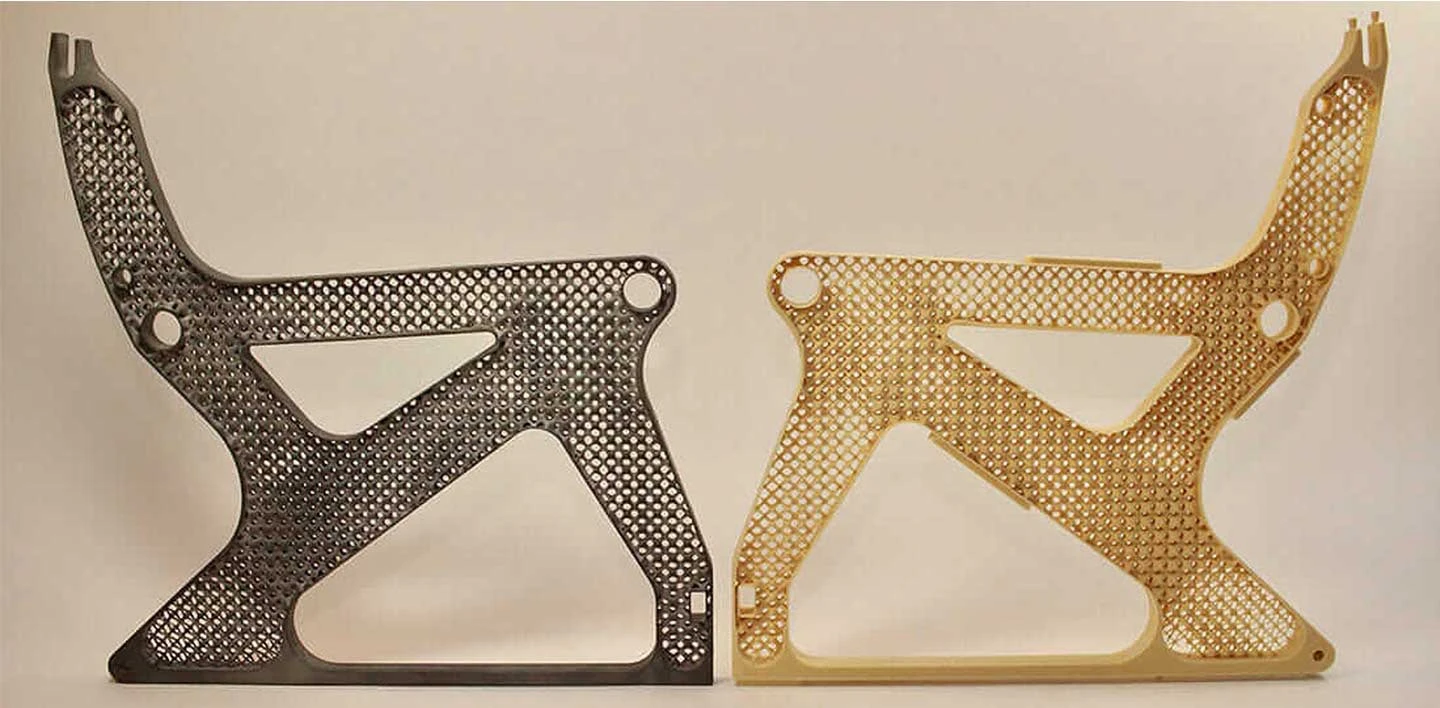
A.I.-generated design for the frame of an airplane seat by Autodesk/Aristo Cast
A.I. can help designers optimize products for specific criteria, such as materials, strength, cost, weight and performance. Typically, designers factor in constraints and parameters when drafting a product. With A.I., designers tell the software what limits and possibilities they've identified for the end-user criteria and the planet's well-being. In formulating a chair, for instance, a designer could ask A.I. to find viable solutions for maintaining high standards of comfort, strength and durability – while reducing material quantity, making furniture more compact and lighter to transport, and reducing CO2 emissions.
In doing so, designers are working with generative design – a form of artificial intelligence that takes on an engineering challenge and presents a wide range of appropriate solutions. Designers then refine these options according to their needs. One illustration is a 2017 collaboration between American multinational Autodesk and a Michigan-based foundry called Aristo Cast. They teamed up to develop an ultra lightweight aircraft seat frame. What resulted – using generative design, 3D printing, lattice optimization, and investment casting – was a seat frame weighing 56% less than typical current models. Autodesk says that – for a 615-seat Airbus A380 plane – this would result in saving $100,000 in fuel per year and in casting 140,000+ fewer tons of carbon in the atmosphere.
A BRIEF HISTORY of A.I.'s EVOLVING FURNITURE DESIGN JOURNEY
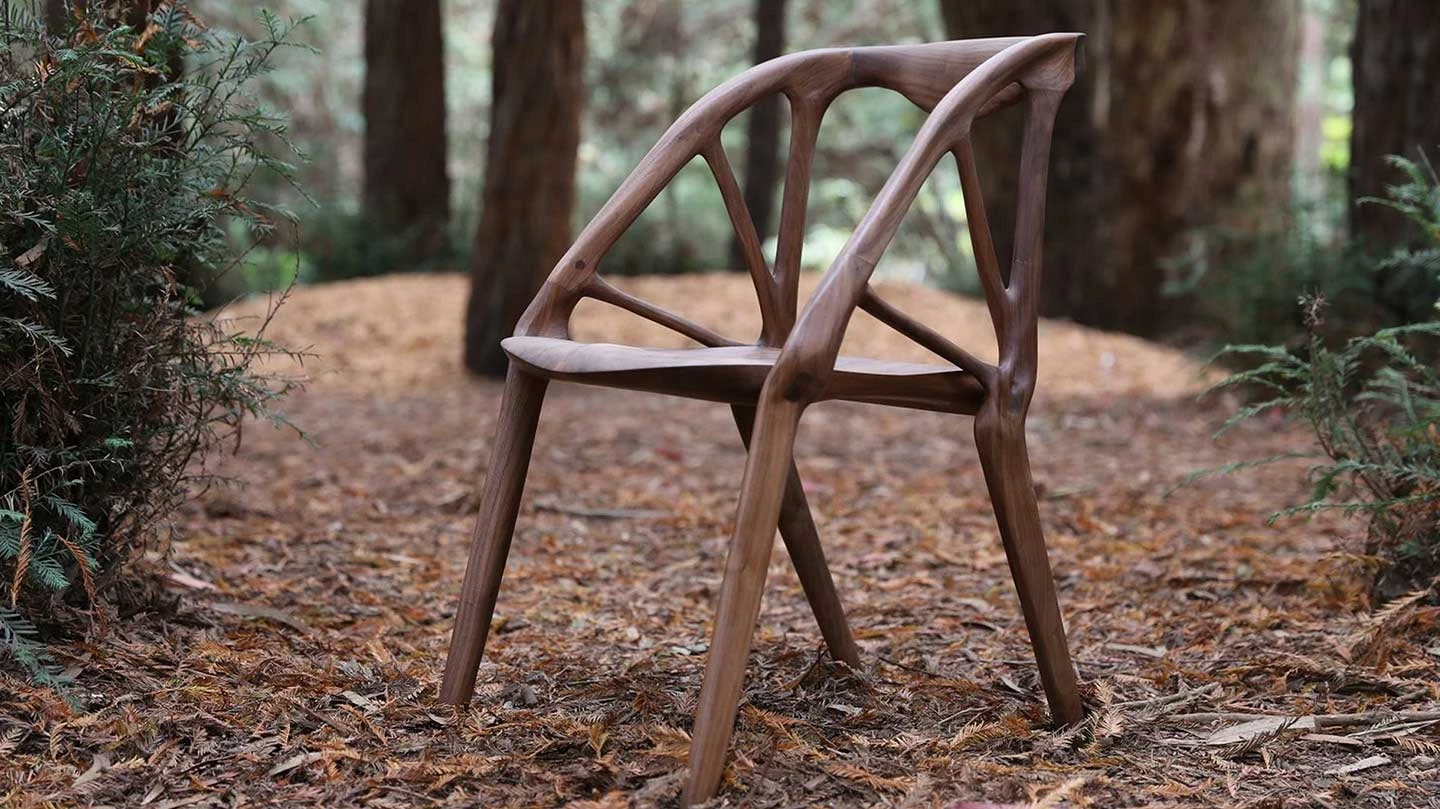
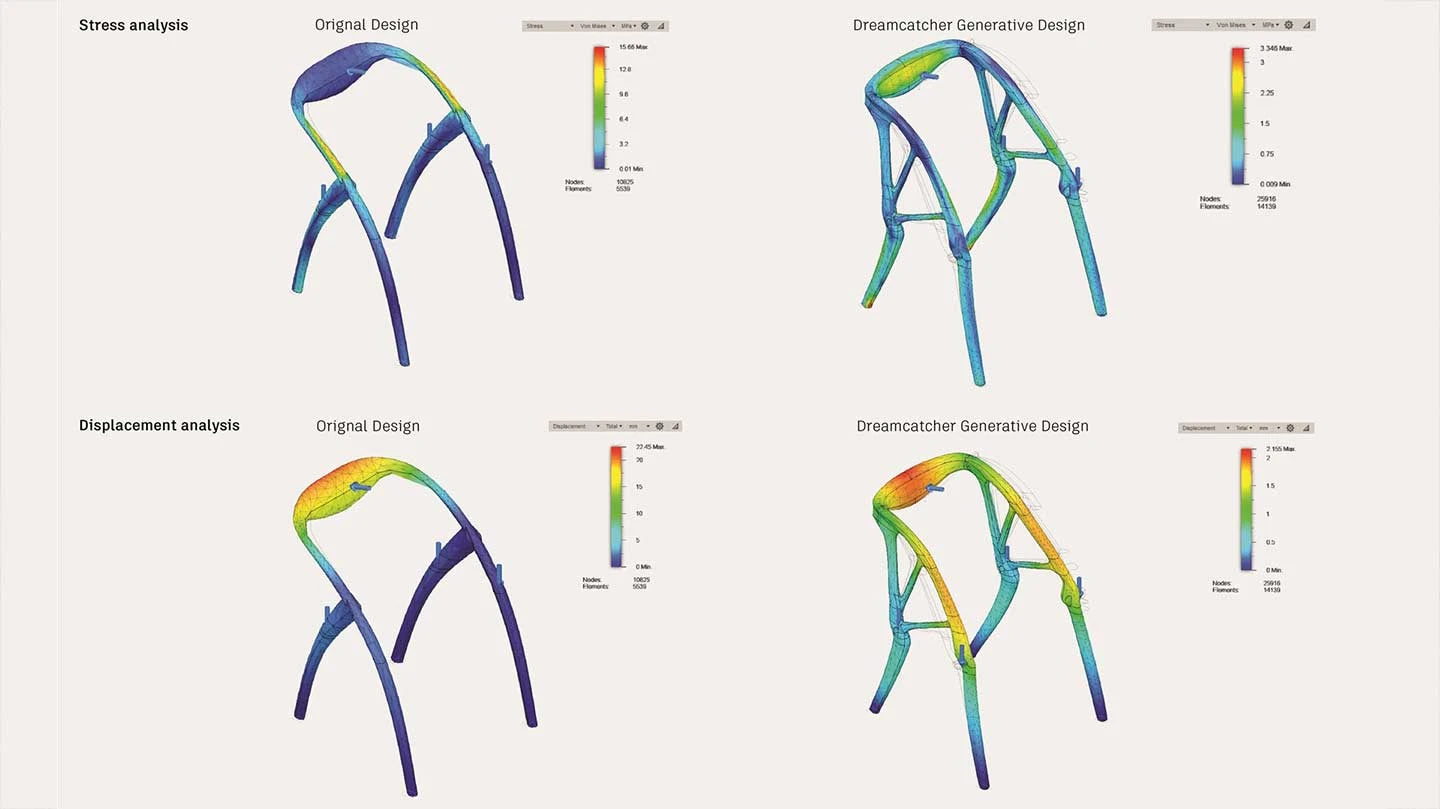
Elbo Chair (2016) by Autodesk's designers Arthur Harsuvanakit and Brittany Preston
One of the first examples of an A.I. collaboration with furniture designers dates to 2016 and the so-called Elbo Chair. Autodesk's designers Arthur Harsuvanakit and Brittany Preston created this chair by asking A.I. to reference the style of Danish mid-century modern, with a seat 18 inches off the floor and capable of supporting 300 pounds. Previously, Autodesk had only used A.I. generative design to model 3-D printed structures made of synthetic materials. The Elbo marked a huge step forward by using CNC -- computer numerical control – milled from wood. The chair requires 18 per cent less material than the designers’ original hybrid model and shows fewer signs of stress in its joints. Although the final object's look and feel did not originate in the designers' minds, it required their sign-off.
Many early-adopters of incorporating A.I. into furniture design see it as a technology best suited as a partner for early brainstorming sessions rather than as a replacement for designer: "I'm viewing A.I. right now as more of a collaborator,” explains Alexandra Zenner of Space10. “Something to augment our own creativity versus necessarily something that's going to eradicate it or change it entirely." Another exciting collaboration between A.I. and furniture design emerged with the TAMU Chair (2019) by Patrick Jouin. Inspired by biomimicry, Patrick Jouin used generative algorithms to reproduce how a natural material grows. Replicating these organic processes made it possible for the chair to “unfold” from flat to three-dimensional in a single move, and it also helped to design and 3D print the chair, using a minimum amount of material.

TAMU Chair (2019) by Patrick Jouin
That same year, Kartell partnered with French designer Phillip Starck & Autodesk to unveil the A.I. Chair. They asked Artificial Intelligence: "A.I., how can you support a human body with the lowest possible amount of material and energy?" With A.I.'s help, the team conceived a chair with the minimal material possible (to date!), using 100% recycled materials and matching the comfort and aesthetic standards specified. But they didn't stop there.
A.I. Chair by Philippe Starck
In April, during Milan Design Week 2023, Kartell showcased its ‘My A.I. Evolution Collection - A.I. Lounge Chair and A.I. Console.’ Through these furniture pieces, Philippe Starck continues his exploration of designing with A.I. – a next iteration, for instance, introduced a seat with a pillow – using new and sustainable materials to achieve pure and essential forms.

My A.I. Evolution Collection - A.I. Lounge Chair by Philippe Starck / Kartell
Just a few weeks ago, in May 2023, during the NYCxDESIGN festival in New York City, we discovered SELF™ - a custom, made-to-order furniture line whose products are generatively designed by the consumer. This avoids dead stock and, as a result, limits waste and CO2 emissions. SELF™ is conceived as an experiment, a co-creation between brand and end-user: "inviting, enabling, and empowering people to design the everyday objects they use and surround themselves with. "During NYCxDESIGN, Chicago-based designers Marvell Lahens and Norman Teague invited the public to experiment with generative furniture design in an interactive workshop experience.
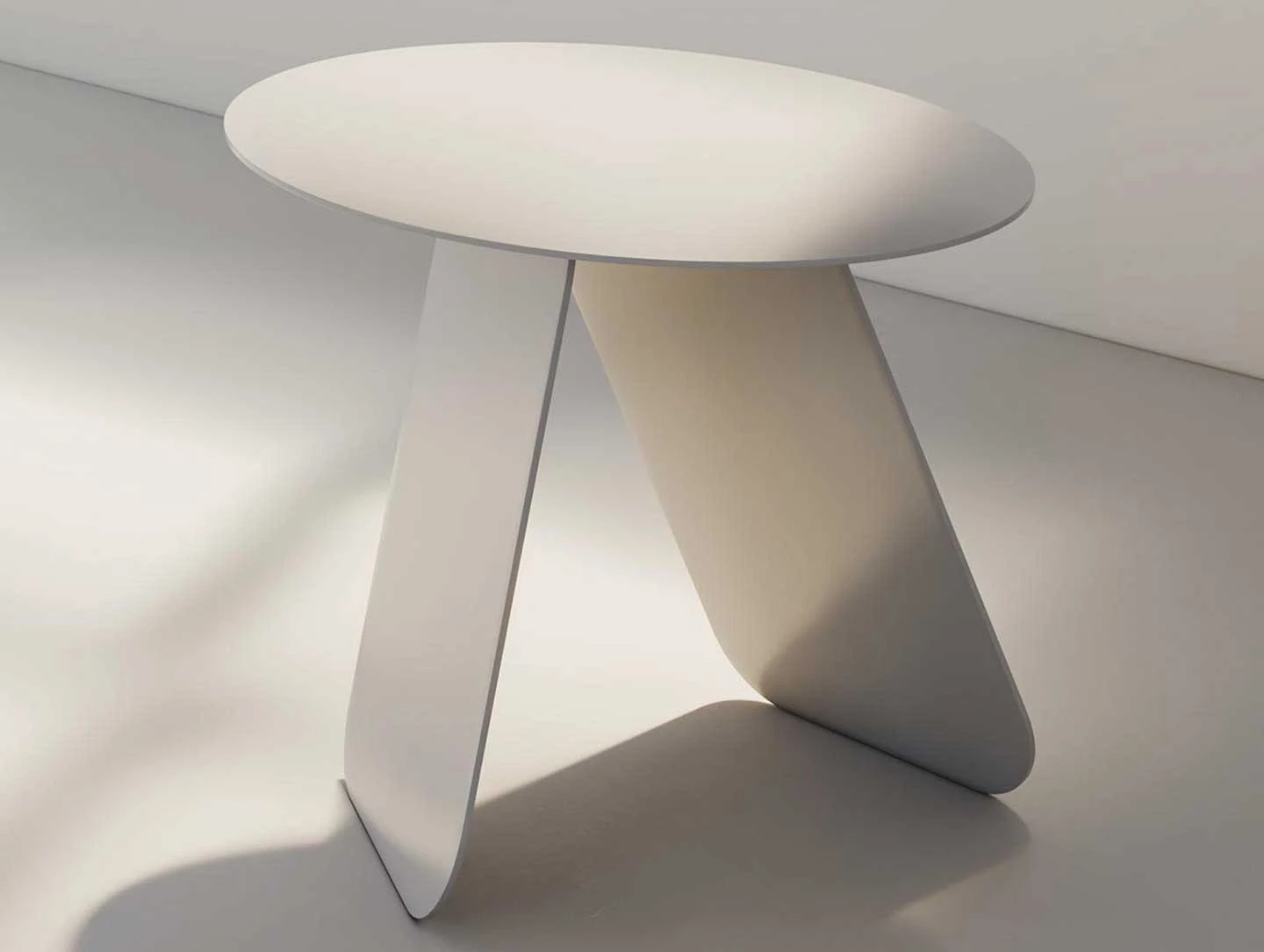
SELF™- generative furniture design
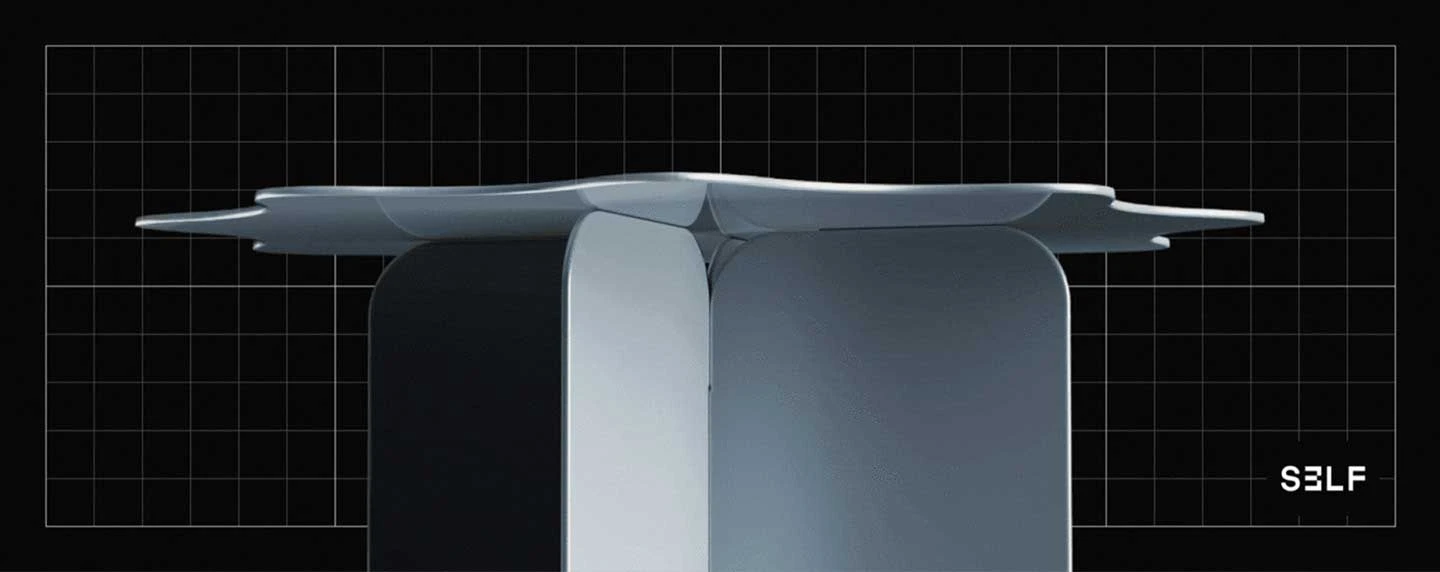
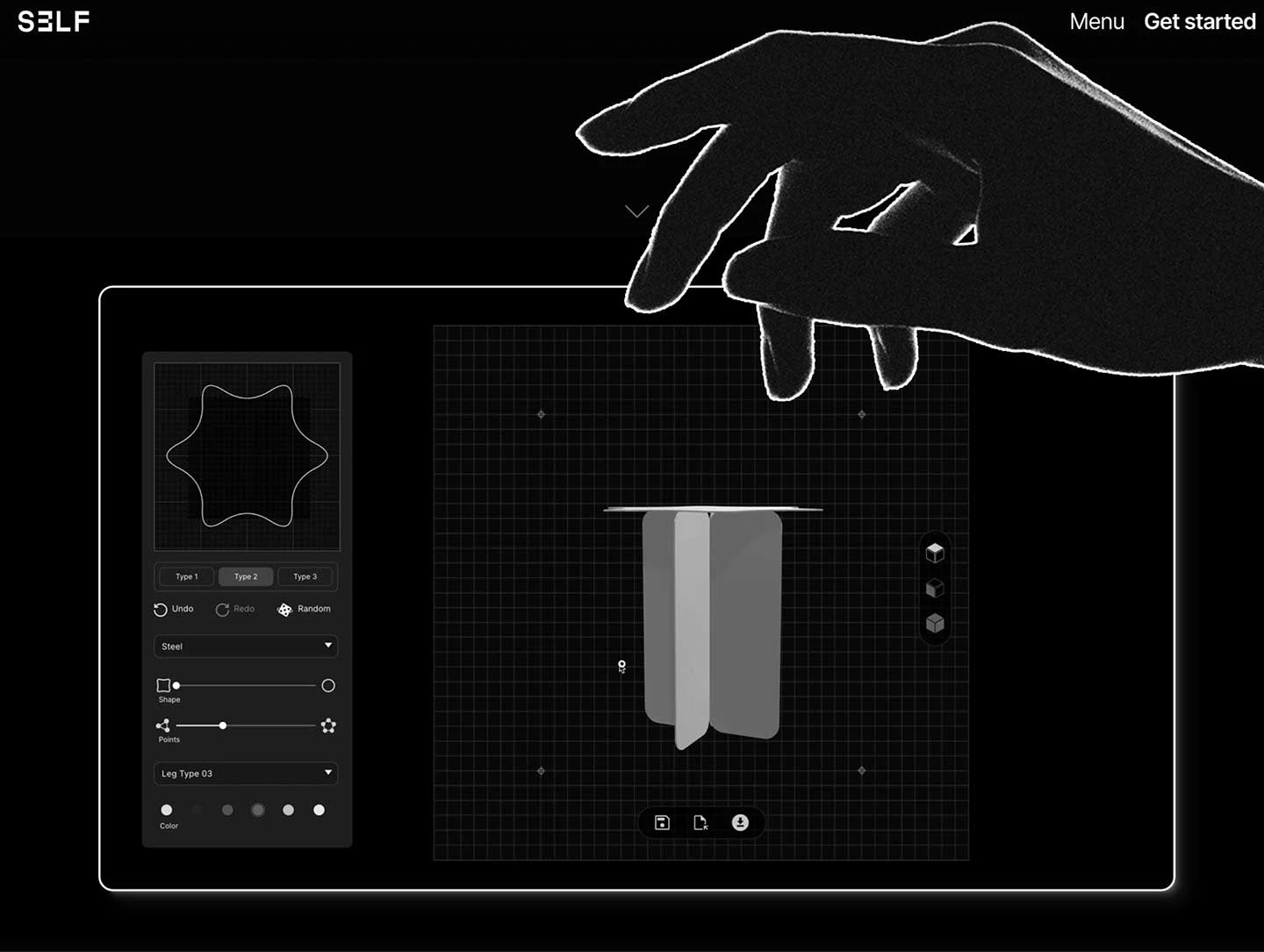
SELF™- generative furniture design by Marvell Lahens
TOWARDS A CIRCULAR AND NEW CLIMATE ECONOMY
In a circular economy, design options can become countless and overwhelming. A.I. can be a helpful tool in weighing various product, component, and material features – such as disassembly, upgradability and recycled content – along with different manufacturing techniques, such as 3D printing. A continuous feedback process where designers test and refine A.I. generated design suggestions could lead to improved design outcomes in a shorter period.
In the quest to reshape the furniture industry for the new climate economy, A.I. shows great promise as a tool across the design field – rather than remain a niche technology for a few specialists, entrepreneurs and ‘whiz-kids.’ “If we apply this type of technology and design from the early start of a project,” says Speziani, the CEO of Phitec Ingegneria, “we could avoid so many mistakes and achieve amazing results in resource optimization and sustainability. That’s why it’s good to talk about A.I. design.”
READ the other articles in the FURNITURE in the NEW CLIMATE ECONOMY series.
*Sources:
Deloitte Economic Institute Turning Point report
PwC’s 25th Annual Global CEO Survey
Modern Metal Casting Plus Additive Manufacturing Equals Paradise Found(ry)
